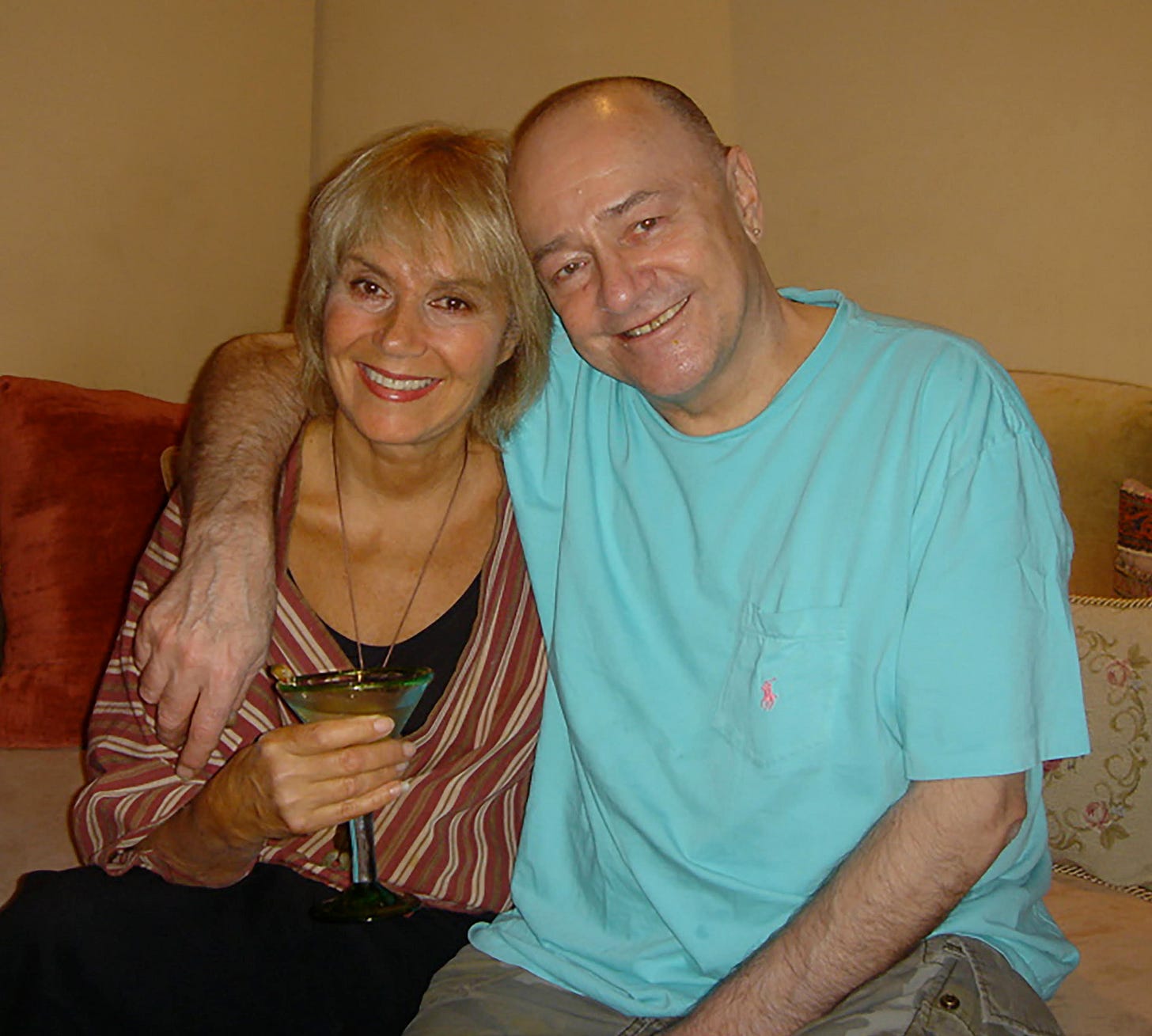THE PIN
“...one Christmas he gave me a very special artifact—a pin he’d made for me: a tiny bronze showcase holding ash from Ground Zero.”
Barton was my significant other minus the sex, since he was gay. We were next-door neighbors in Westbeth Artists Housing in New York City, and we had so much in common: both lived alone, both were collage artists, both used found objects in our work, both stored our materials in antique oak office furniture and traded them with each other to use in our art. When we took breaks to have a meal or a drink together, we loved to gossip about our neighbors and make each other laugh. When I came home from traveling, I’d ring his bell before I went to my own apartment, and he’d whip up martinis to celebrate my return.
Barton’s apartment was a work of art in itself, a curated trove of treasures he’d collected or traded for or been given by friends. (He had so many friends; with his sweet smile and irreverent humor, everyone who met him adored him.) There were Moroccan lamps, religious relics, ancient Egyptian scarabs, feathered headdresses, woven baskets, carvings, sculptures and statuettes. There was a bull’s head mounted on a wall next to a collection of African masks, and a Chinese bedchamber made for smoking opium.
His art famously included constructions made of shredded money from the U.S. Treasury. But he was probably best known for his artifact assemblages: collections of objects of cultural significance, each object mounted on heavy white paper with a little note describing it. A piece of skull from someone who died in the Black Plague, a whiskey prescription written during Prohibition, a scrap of O.J. Simpson’s glove, dirt from Dr. Ruth’s lake house, to name a few.
He was always interested in death and I had a dark sensibility of my own, and one Christmas he gave me a very special artifact—a pin he’d made for me: a tiny bronze showcase holding ash from Ground Zero, with a miniature bronze airplane dangling below. I was simultaneously touched, shocked and appalled.
In 1980 a photographer friend and I had won an Omni magazine contest themed “Images from the Year 2000”; our entry was a photo of my assemblage The World Trade Center Going to Heaven. Somewhere along the way, the assemblage was stolen, and Barton had never forgotten how upset I was to lose it. But still. We had stood on our rooftop watching the towers burn before they collapsed. For months afterwards, we and all our neighbors had breathed the toxic fumes. “I can’t wear this!” I said when he gave me the pin. “Could you please make it into an art piece I can put on the wall?” And he did.
After he died, in 2012, his entire apartment with all its contents was reconstructed at the North Dakota Museum of Art. A bunch of his friends went to the opening. While someone was giving a memorial speech on the balcony, I sneaked into his resurrected room, crawled into the opium bed and hugged the pillow that had, at Barton’s request, been stuffed with his and his mother’s ashes. It was a gift I gave myself, that private goodbye, and I think my old friend would have toasted his approval.
—Joan Hall
More about Barton: Read his New York Times obituary and an introduction to Barton’s Place, his reconstructed apartment at the North Dakota Museum of Art.
A native New Yorker, Joan Hall is a past winner of the Miriam Chaikin Foundation Writing Award. Her books of poetry Behind My Mind and Rhyme Time are illustrated with her collage and available on Amazon.
For a different reading experience, The Keepthings’ stories can also be read in their entirety on Instagram @TheKeepthings.
Have a story to share? See the complete submission guidelines, including photo guidelines, at TheKeepthings.com.







Friendship. Golden one you had.
Thank you for sharing the talent of such a unique artist! How very special the 9-11 assemblage piece is!